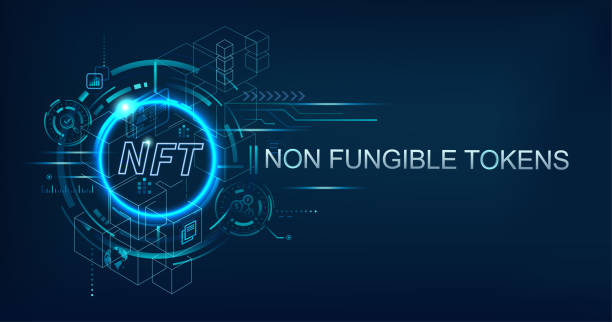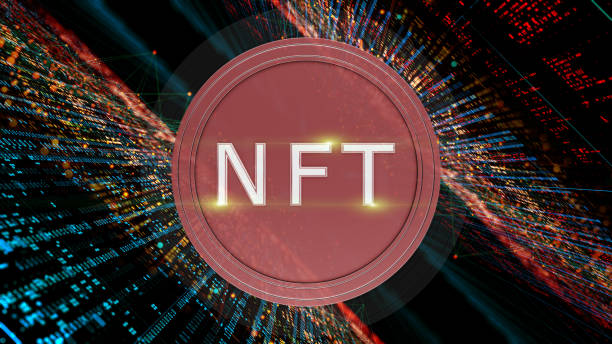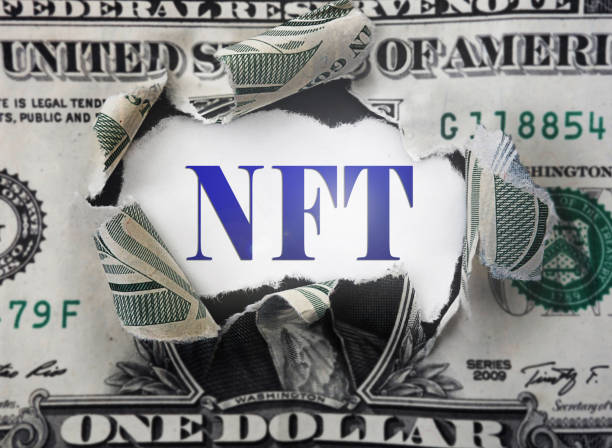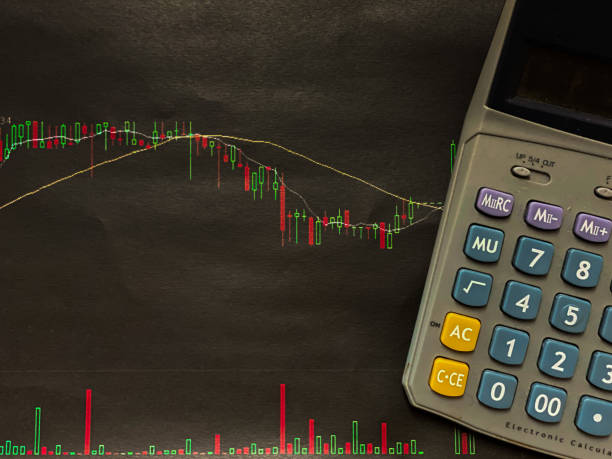NFT valuation has now become a hot topic especially after a digital artist, Beeple, sold a non-fungible token (NFT) for nearly $70 million earlier this year. The high price that was commanded in this scale coupled with several other transactions resulted in a challenging question for the CPAs.
When it comes to a firm’s balance sheet or an individual’s collection, what is an NFT’s value? Also, how can a digital artist determine their NFT valuation when it is ready for sale? As is the case with many emerging asset classes, the answers to most of these questions are not straightforward, and they present some challenging issues for people to consider.
NFT Valuation In A New And Growing Market
The NFT market is still new and growing. Non-fungible assets, being a type of digital crypto-asset, are unique digital representations and they establish the ownership and authenticity of the assets that they represent.
In March this year, one blockchain investor acquired a file of a digital collage by Beeple at a Christie’s auction for over $69 million, the first digital NFT artwork sold by a notable auction house and the third-highest price ever reached for a work by any living artist.
The reason for the popularity of non-fungible tokens is that they provide artists and creators with a method of confirming their rights, to guarantee that their NFTs will be used in the manner that they allow and that they will get some compensation for any future use.
Questions have come up about high NFT valuation in various projects because it appears like the image may be copied from a public site and used without having to pay for it. However, having unique rights to the asset appears to drive the market and valuation of non-fungible tokens. Buyers acquire NFTs for sentimental reasons as a form of investment or collection.
What Is An NFT?
Non-fungible tokens are minted from digital objects that represent tangible and intangible items. Every NFT has a distinct signature and authenticates that an asset is distinct and will never be interchanged for another.
Blockchain supports and creates tokens that can be traded and sold mostly through auctions. The ownership record of the NFT is stored and then transferred on these virtual ledger platforms. Ownership of the involved asset might never leave the creator and the NFT represents several rights to access the underlying asset and possibly exploit it for commercial use.
One partner at the Citrin Cooperman’s Forensic, Litigation, and Valuation Services Department, Mark DiMichael, mentioned:
“NFTs are an offshoot of blockchain technology. One bitcoin represents one bitcoin and nothing else, but NFTs represent something else.”
A perfect example is the collectible digital work of art that provides the purchaser with ownership and bragging rights. It is easy to transfer compared to the physical asset and it never loses its value with age. DiMichael said:
“The owner can create a digital work of art, make a PDF file, and sell a blockchain-based asset that is representative of that PDF file. The owner is usually not selling the intellectual property rights to that art and could sell that image to someone else or use it in another way.”
Other non-fungible token examples include the digital reproductions of music, events like ‘NBA Moments’, trading cards, videos, sports memorabilia, tweets, photos, real estate, and designer sneakers. Rob Massey, CPA, who is a partner and Global and U.S. Tax Blockchain and Digital Assets leader at Deloitte Tax LLP, stated:
“The concept of NFTs is sometimes misunderstood, as NFTs can come in different forms and represent different rights. What is exciting about this space is that it is proving another blockchain concept that can be utilized across many areas.”
There are several NFT marketplaces for selling and buying NFTs. AtomicMarket, OpenSea, Rarible, and Mintable are the platforms that are geared towards helping first-time users. Other platforms for seasoned users and popular artists who need an application procedure include Enjin (for gaming and art), SuperRare and Nifty Gateway (partnered with Sotheby’s), and NBA Top Shot (only NBA collectibles).
Valuation Challenges
Due to their nature and relatively new use, NFT valuation is an evolving and challenging sector. What makes NFTs popular also makes valuation more challenging. Massey said:
“Value is based on perceptions of owners and buyers, scarcity, access, and the distribution channel. There are no physical limitations on NFTs, and they have broader visibility and liquidity because they can be accessed and distributed across a global landscape in an instant.”
There are various valuation considerations for the purchasers, creators, and owners of NFTs at the start of their existence and continuously as these assets are included on the balance sheets and are subjected to financial statement audits. During its creation, the NFT’s value might depend on the characteristics of the creator and the token itself, among several other factors.
For instance, the wider marketability and recognition of a celebrity artist will impact the value of their NFT over that of the other, unknown artist. What affects NFT valuation may be highly speculative until the NFT is sold. Massey explained:
“The value of an NFT is based on a third-party transaction between a willing buyer and seller. If using cryptocurrency that is actively traded to buy an NFT, the value of the asset is likely determined by the value of the cryptocurrency used in the transaction, at the time of the transaction, as it has the more readily ascertainable fair market value.”
The managing director of the Alternative Asset Advisory Practice at Duff & Phelps, a Kroll business, David Larsen, CPA/ABV, David Larsen, said:
“None of the basic metrics you would use to value private companies or traditional investment vehicles like shares or warrants are available for NFTs. For an NFT, what the last buyer paid for it gives you an indication of what the value is, but the next buyer could pay something else, and it is the amount the next buyer will pay that determines the value.”
Larsen said that it is not easy to determine the next buyer or obtain any information on why they would agree to pay a certain price. NFT valuation can change according to perceptions over time. Larsen asked:
“If an NFT for art was trading and its price went up so the value increased, but then potential buyers decided at a point in time they can look at the digital image on their phones or computers for free and there are no new buyers, does that mean the NFT’s value is now zero?”
It is not always the case that there will be third-party transactions in an NFT usage. The sales done by owners of other similar NFTs might be used as data points. Since the value of these digital assets may change significantly, the time and date of an NFT valuation are critical.
This strategy raises the question of what the value of a non-fungible token that is self-created is for the owner at the time of creation. The value is mostly based on the intrinsic value to a holder of the cost incurred to create it.
Most CPAs cannot value NFTs at the time, and some appraisal firms are valuing digital assets. For the artwork NFTs, the available marketplaces can be a valuation guide according to the selling prices of the underlying piece of art or any other works of art created by the artist. DiMichael said:
“NFTs are new and there are not a lot of comparables today, but someday there might be more.”
Many now wonder whether a digital representation of an asset is worth less or more than the physical asset itself, and there might be many digital images of the same asset available for free.
Accounting For Non-Fungible Tokens
Currently, there is no particular guidance on how to account for an NFT. FASB has decided not to add any project on accounting for cryptos and digital assets to its agenda. In that context, there is an issue of which asset accounting model should be applied to an NFT valuation.
Non-fungible tokens do not meet the GAAP definitions of marketable securities, cash or cash equivalents, inventory, or financial instruments. DiMichael Said:
“Based on GAAP definitions, cryptocurrencies fall under intangible assets, which are recorded at cost, can’t be written up as they go up in value, and are tested at least annually for impairment in value.”
The high volatility and speculative marketplace increase the challenge with an intangible accounting model for digital assets. DiMichael added:
“Values have been increasing, and historical costs are not very useful to financial statement users. These assets can be immediately sold, and the price of bitcoin can be looked up with a click on a cellphone, unlike most other intangibles where valuation is more difficult and very subjective, and the asset may or may not be able to be liquidated.”
Larsen said that impairment accounting is primarily based on the lower cost or fair value. He added:
Challenges are establishing fair value if there is no market or recent transactions and no similar assets that can be used as a proxy.”
A variety of accounting models apply for the investment firms and hedge funds that have no intangible assets are compelled to report NFTs at fair value. They need to report the value based on what they target to receive from them or similar tokens trading in the prevailing market.
For the NFT creator, no GAAP standard is available to specify the best accounting model when the digital asset is created. Also, there is no defined way of capitalizing or charging based on the costs and expenses incurred when minting the NFT until it is sold. In these cases, an inventory accounting model may be applied.
Since NFTs are digital creations, the costs are relatively small although there might be some fees charged to put the NFT on any viable blockchain and transaction processing. Thus, an inventory accounting model might be applicable.
Buyers always record non-fungible tokens at their cost according to the market price. Exchange losses or gains are determined by the crypto used to pay for the NFTs according to the difference between the market value of the crypto at the time of the sale and the price originally paid for it.
NFT owners get some income whenever they get crypto in exchange for their digital assets. Other revenue recognition challenges may come up under the FASB ASC Topic 606, ‘Revenue From Contracts With Customers. Sometimes, creators sell limited membership to their assets while others create content that enables them to get a recurring revenue stream whenever future resales happen.
Risks Involved May Affect NFT Valuation
Major risks come with digital assets and their internal controls over transactions. They include fraud, security, general IT, and accounting controls, together with unique controls over digital transactions and wallets. DiMichael highlighted:
“Risks for companies and their auditors to be aware of include how to verify the existence of NFTs, who are the interested parties, how are transactions initiated and executed, and what blockchain is used.”
Auditors and firms may have considerable issues linked with proving the ownership of non-fungible tokens. According to DiMichael, new digital wallets can be created within seconds. He added:
“With blockchain and crypto assets, on publicly available websites, you can see who owns every NFT on the Ethereum blockchain-based on the 42-digit address.”
Auditors have to validate ownership of any address given and some firms may have hundreds of them. Thus, IT specialists might be brought in to help determine ownership from a technology point of view.
Larsen said that existence is another issue that affects NFT valuation. He asked:
“Is it really there on the platform? What if the purchaser loses the digital key to the digital wallet?”
So far, no consistent guidelines are regulating the digital assets. However, many regulators like IRS, the SEC, and Commodity Futures Trading Commission (CFTC), have issued official statements about the challenges associated with owning, issuing, and trading digital assets.
Several indirect tax implications include sales taxes for the NFTs buyers, creators, and resellers. Massey commented:
“This area requires care around what the underlying asset being sold is and which jurisdiction it is attached to.”
Regulators do not know whether to tax NFTs like investment property at capital gains rates, taxed as income at ordinary tax rates, or not taxed at all. Many say that NFTs should be taxed based on how they are used or transferred. For now, there are no defined US tax rules for the digital assets market.
Today, lawyers, regulators, and accountants are creating analogies to the current case law and concepts. Nonetheless, there is a lot about NFT valuation and taxation that is different from other assets.
Due to the unique nature of non-fungible tokens and the marketplaces where they exist and trade, boards, corporations, and institutional investors have to evaluate whether they need to invest in NFTs or not. Larsen concluded:
“Individuals decide whether to speculate or spend their money on NFTs based on the intrinsic value of the digital interest to them as a holder or what they think someone else would pay for them, but institutions and boards must consider whether the NFT investment is suitable for its purpose, such as investment returns, returns to shareholders, or pension funding, and whether they should speculate.”













